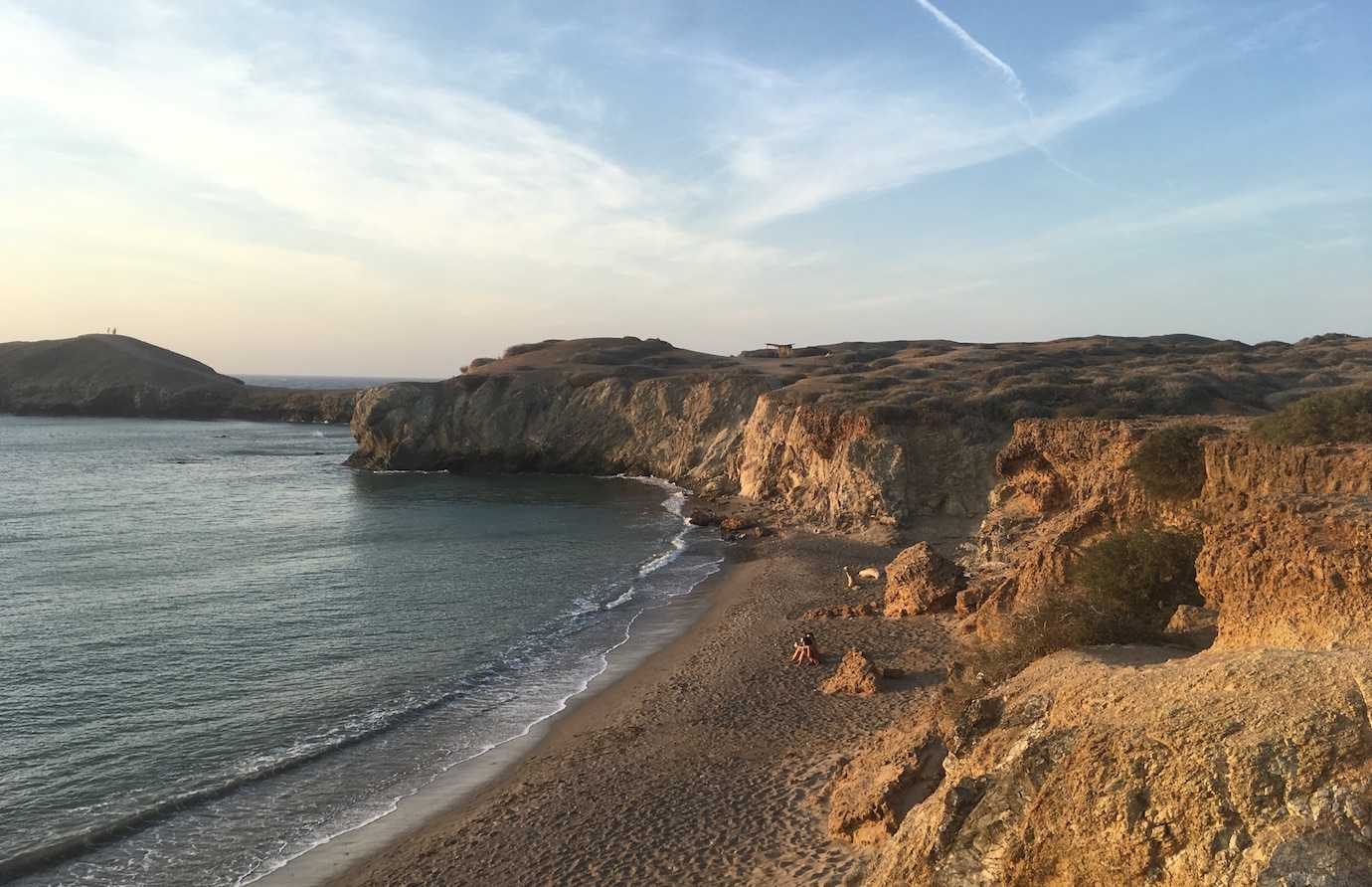
Almost at the tip of the South American continent and in Colombia’s most northern region, La Guajira, is Cabo de la Vela.
La Guajira is home to the indigenous Wayuu people and its northernmost part is often described as where the desert meets the sea.
Cabo de la Vela is a place, being so far north, that not every backpacker ventures to. In our month travelling together, Phoebe and I have really enjoyed going to several of Colombia’s lesser visited destinations – the Pacific coast, Caño Cristales, Providencia. Cabo de la Vela definitely fit the bill and we were both keen to see the desert and the sea side by side.
We spent three days in Cabo de la Vela, which was one more than planned since I got ill (more on that later!).
Ojos del Agua and El Faro
We arrived to Cabo de la Vela mid-afternoon, found ourselves some hammocks to stay in, and hopped on a mototaxi to go to El Faro (the lighthouse) and Ojos del Aguas beach for sunset.
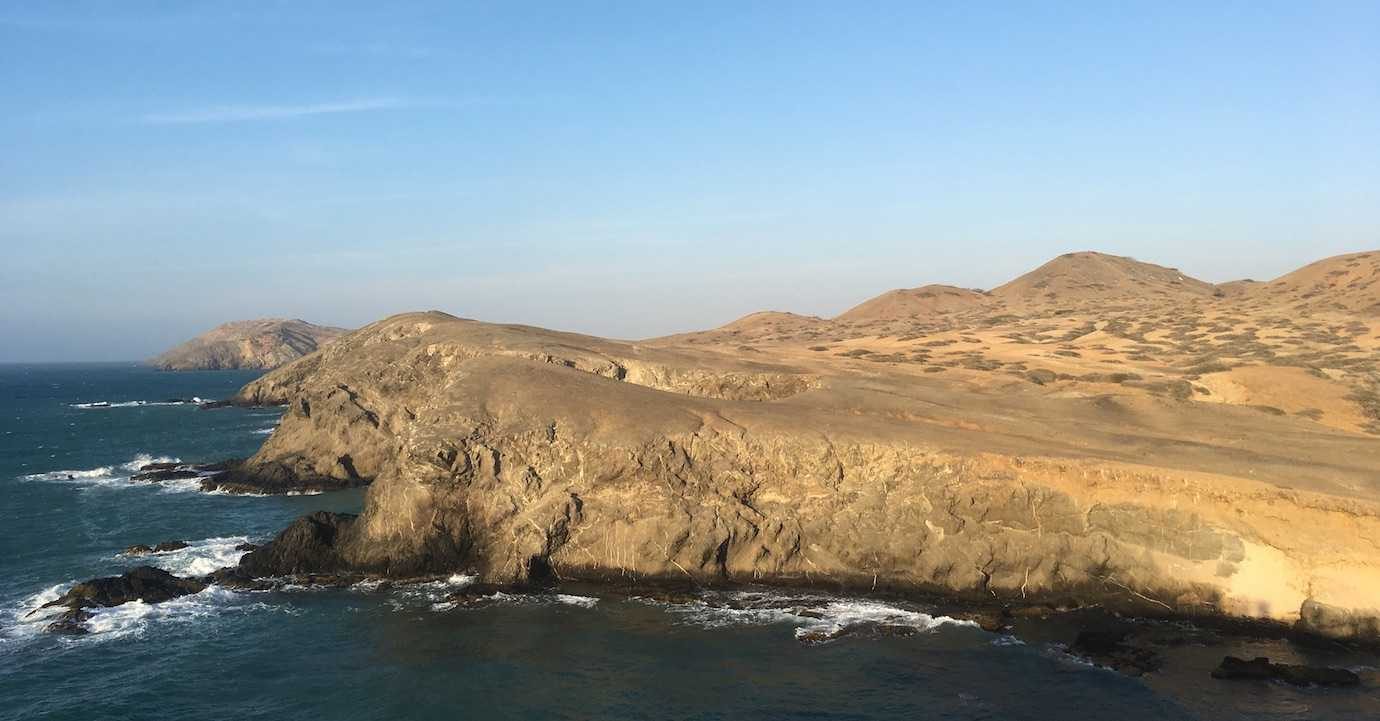
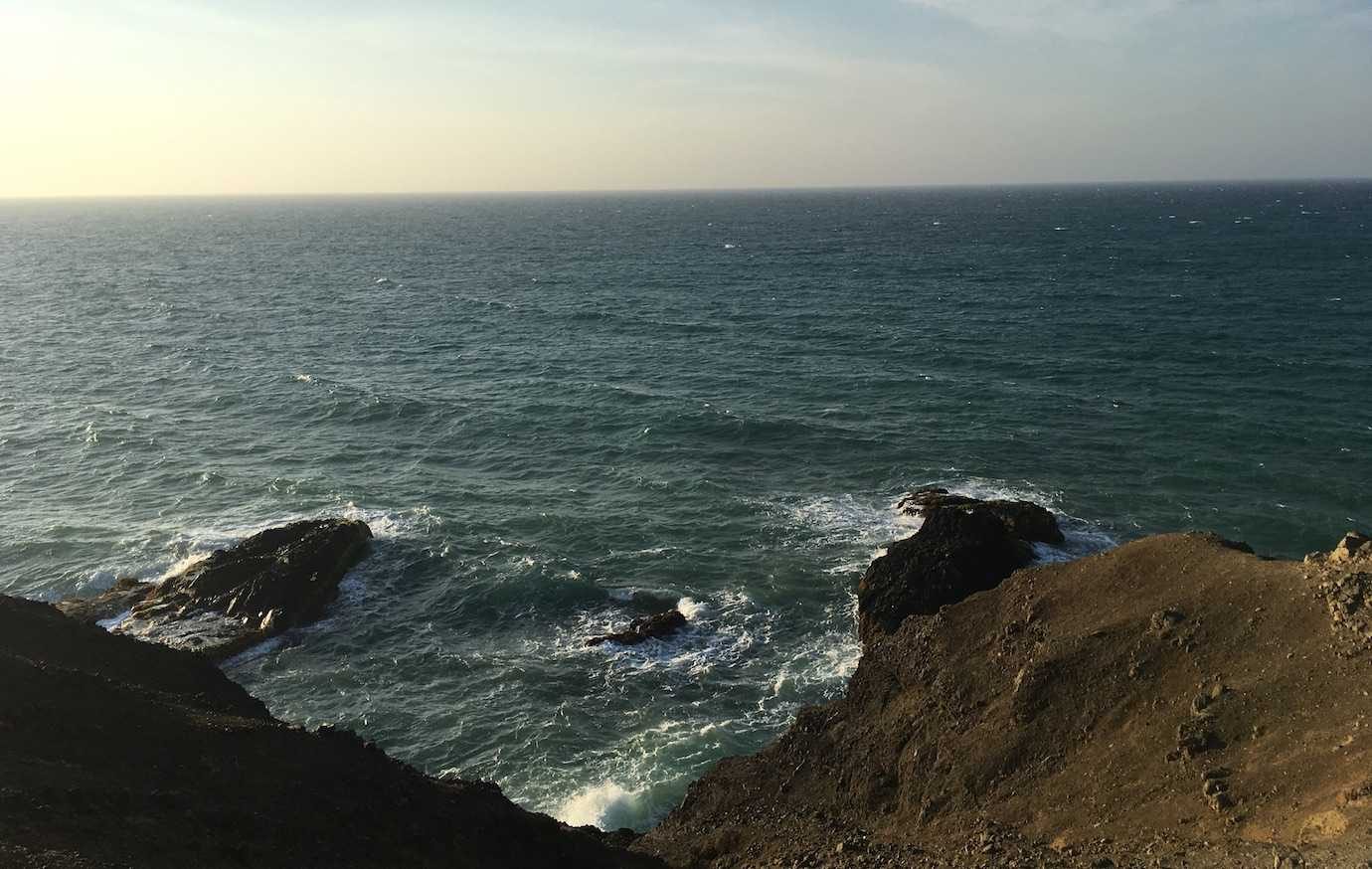
The lighthouse isn’t your typical lighthouse, rather a metal pylon like structure. There were lots of people there at sunset so we chose our own spot between the beach and lighthouse.
The late sun’s rays casting a golden glow over the empty desert landscapes was beautiful! When the sun disappeared behind the horizon, the sky got some really pretty pastel colours. I wasn’t expecting the wind to be so strong!!

Mototaxi cost: 5000COP per person each way and per stop. Our journey cost 15,000COP (less than £4) each.
I got ill
I’ve been very lucky so far with not getting ill in South America. I guess it had to happen at some point and that place was Cabo de la Vela. The next morning I woke up feeling slightly dodgy.
Without going into too much detail, I’ll just say I was having trouble at both ends and at one point I was super dizzy and pale. I felt very far from my best and got worse around midday.
Phoebe and Luis took me to the town’s medical centre, a five minute walk away (yay to small places!), and they put me on a drip. I’ve never been on a drip before so that was a first! Thankfully I felt much more with it and better afterwards!
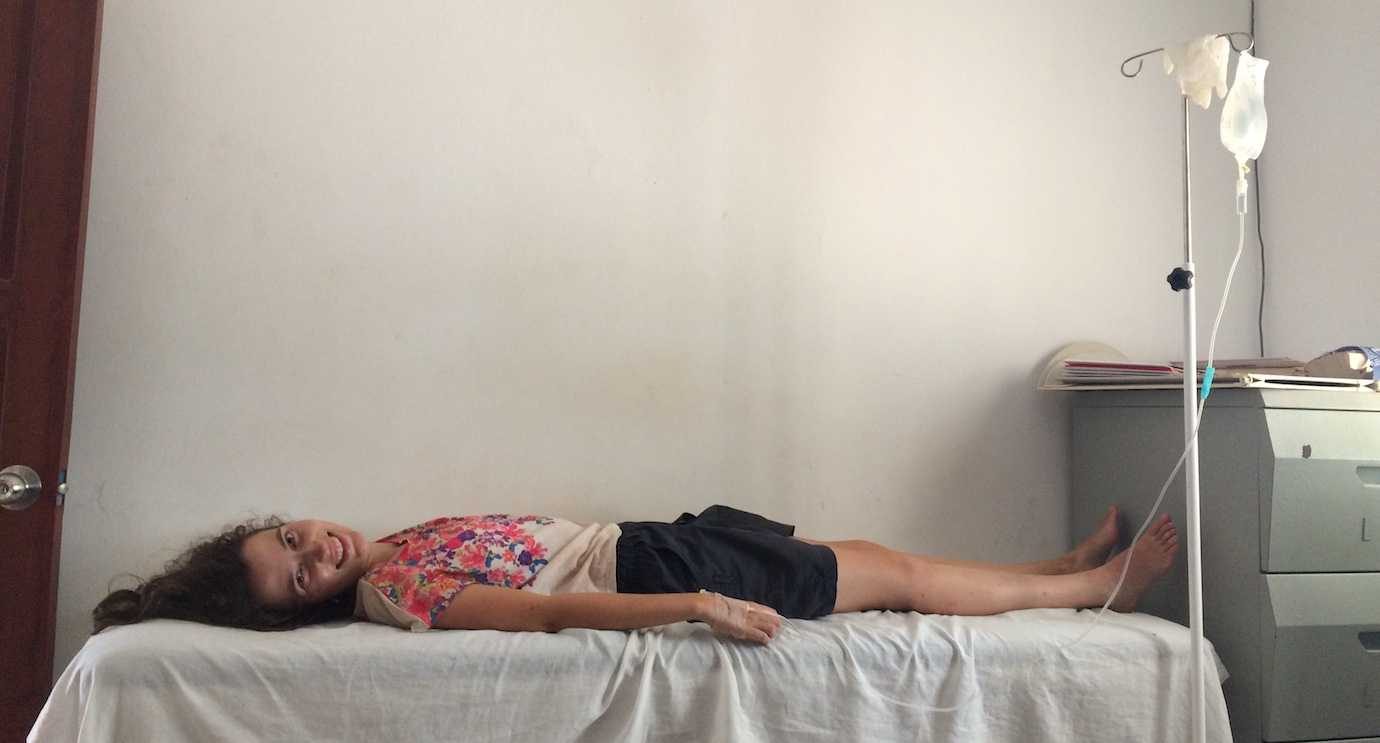
It’s fair to say that our first full day in Cabo de la Vela didn’t go to plan. I spent most of the day feeling rubbish, lying in my hammock, in the toilet and at the local medical centre.
The sunset that evening was gorgeous and watching it was the best part of my day! I’d say the best sunset so far from my time in South America and a beautiful way to end a sicky day!

Also, thanks Phoebe (you’re a gem!) and Luis for the help! It’s really appreciated!!
Recuperating & Pilón del Azucar
Our second full day was my recuperating day. We chilled in hammocks, swam in the sea and went to Pilón del Azucar in the late afternoon for sunset.
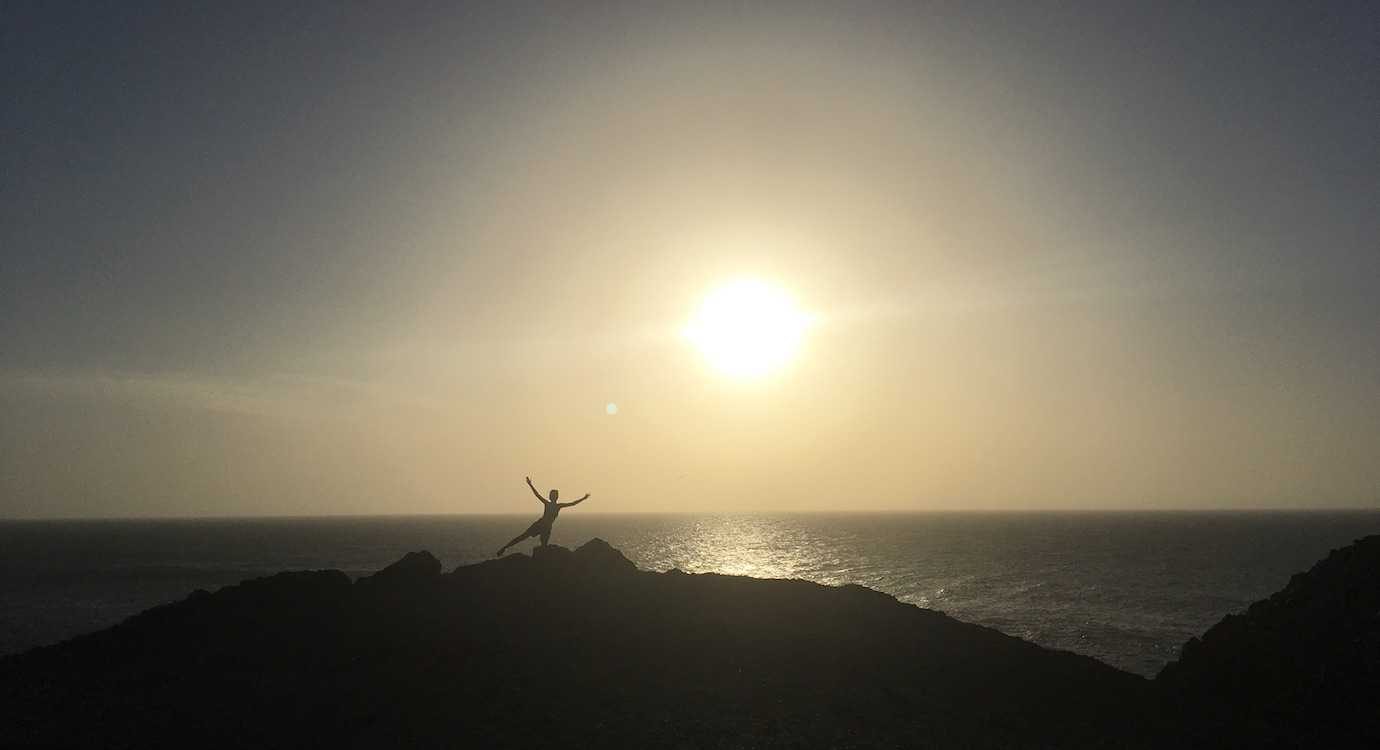
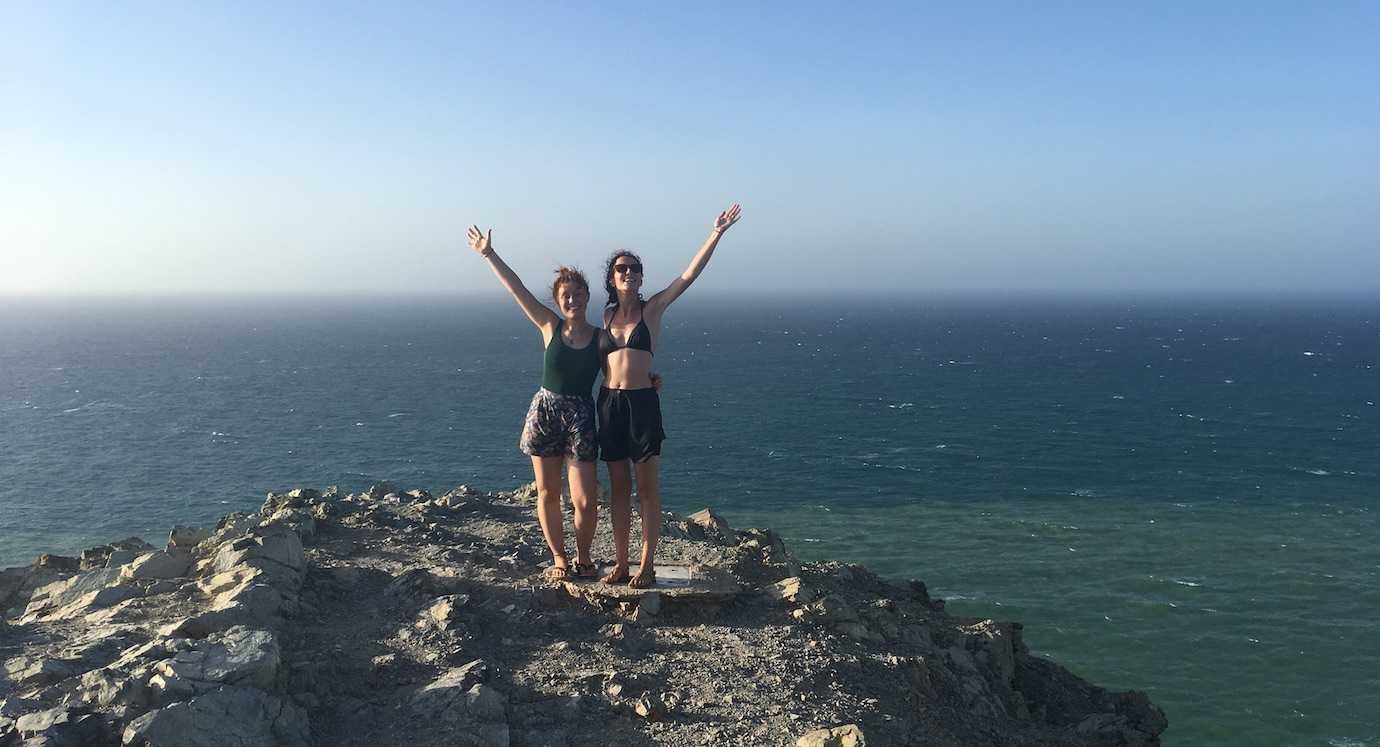
We went by mototaxi again and, unknown and unrequested by us, we had an extra stop at Arcoiris beach. The waves crash against the rocks and from the right angle you’ll see rainbows in the spray. We got soaked and saw so many rainbows, even a full circle one! We were really glad we went!
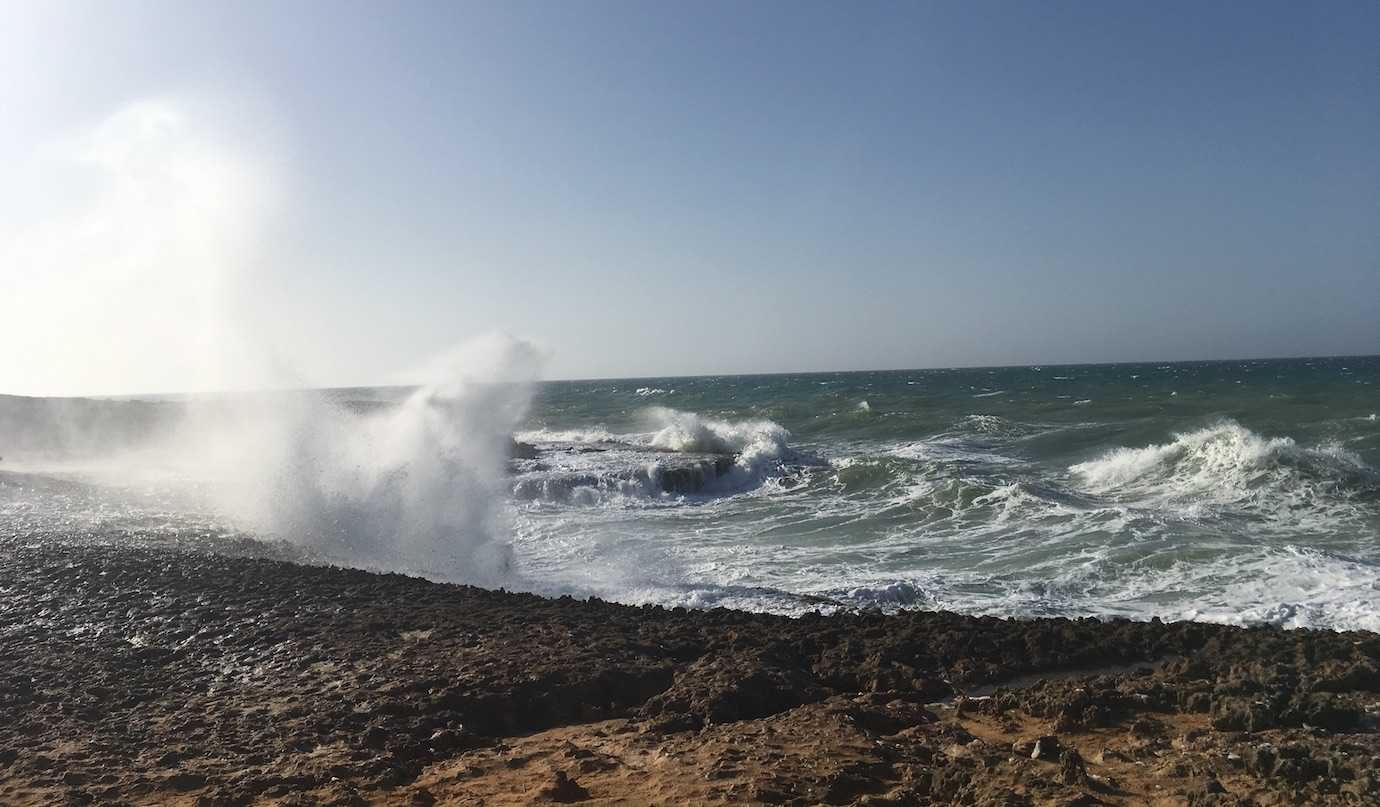
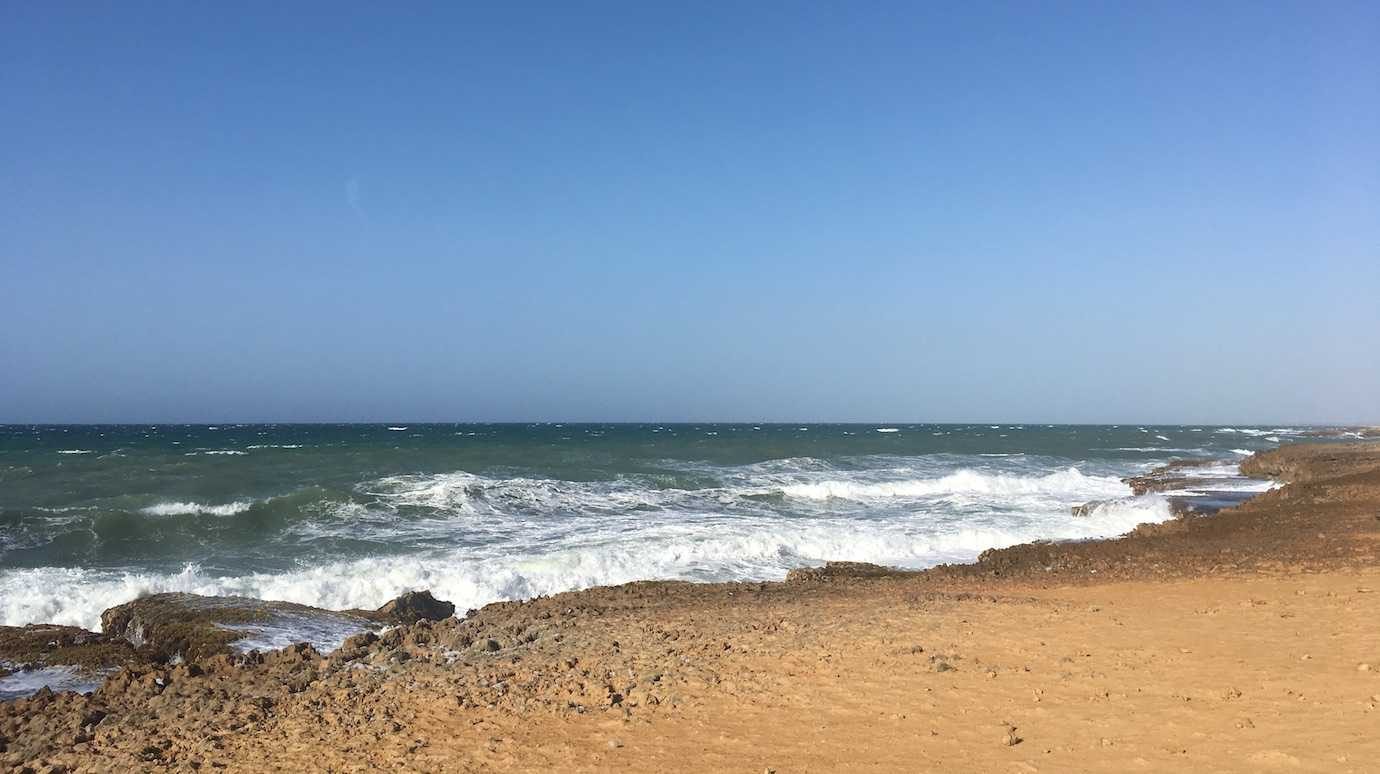
Pilón del Azucar was beautiful in the golden light and we were soon the only ones there as the sun set. The waves were strong so be aware of them! I got wiped out by one and lost my sunglasses to the ocean!
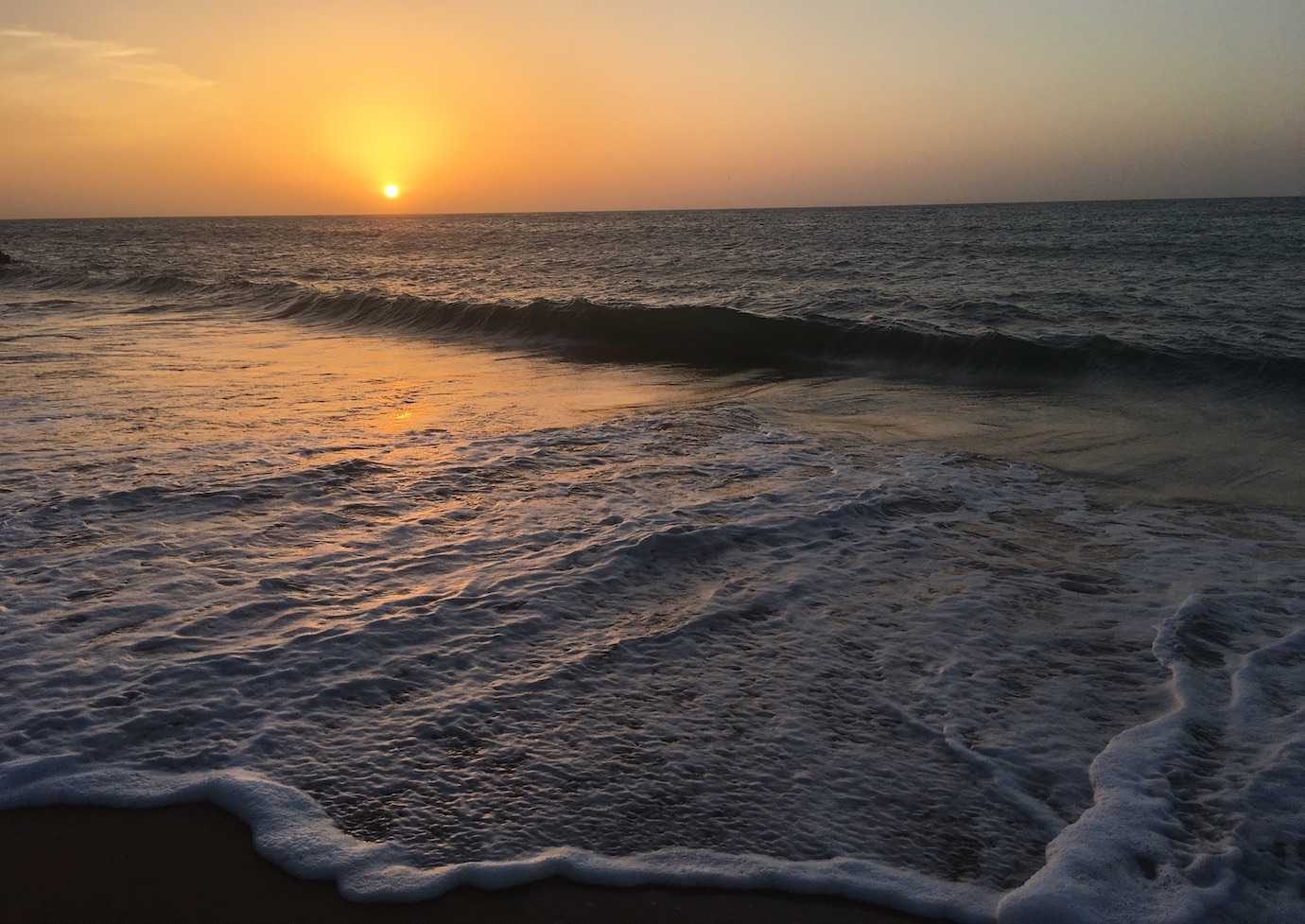
The ride back to town was great fun. I find it crazy how comfortable I am on the back of a motorbike now. Before this trip, I’d only been on a motorbike once before in Brazil in 2017 and I was super nervous.
Update: I still do get nervous but I also really enjoy it, especially the wind in my hair and in the setting sun!
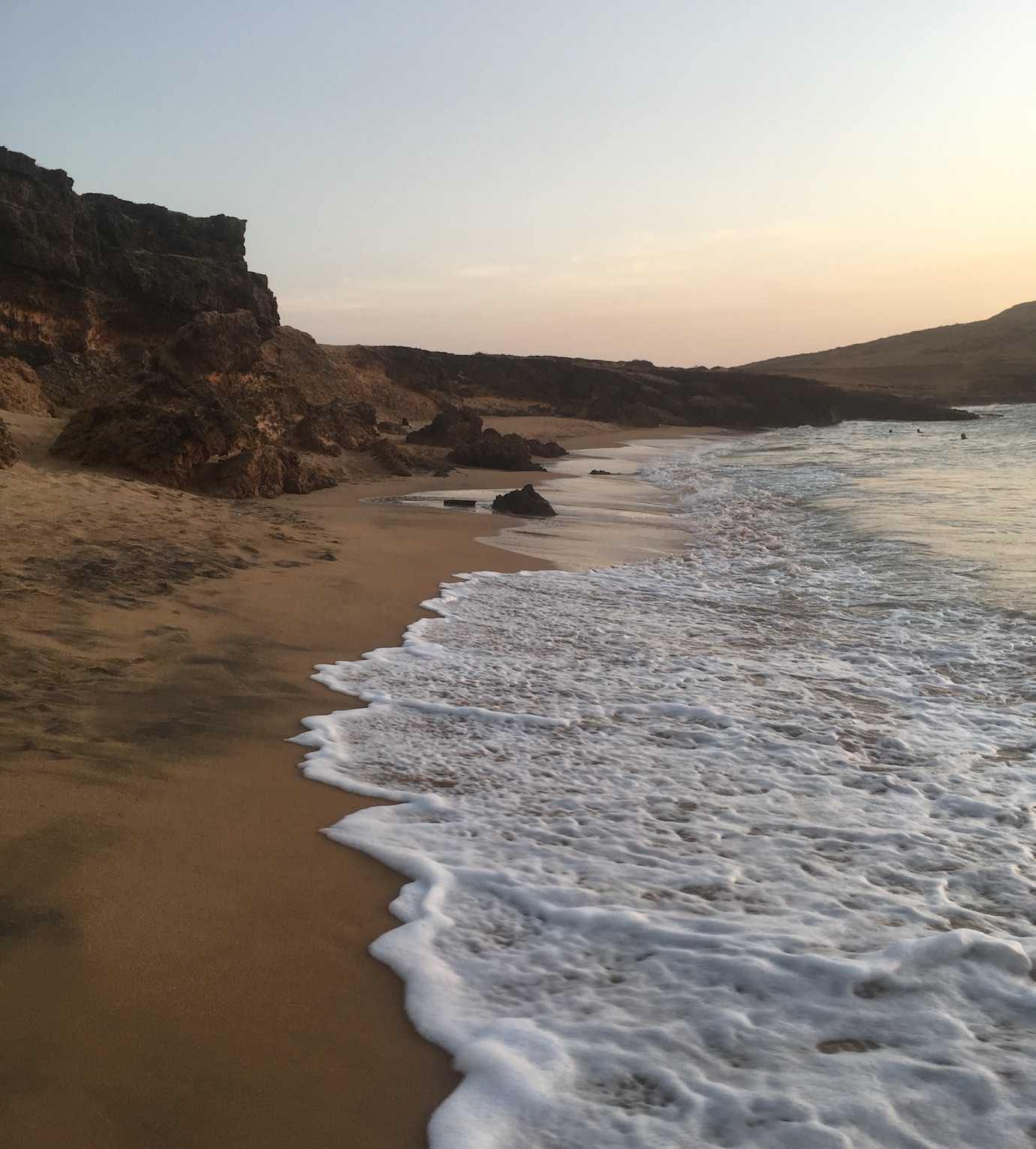
Accommodation note: We stayed at Caracol hostel, which isn’t officially called that anymore but everyone knows it by that name, in hammocks for 10,000COP (£2.50) a night. Chinchorros, bigger hammocks, cost 20,000COP (£5) a night.

How to get to Cabo de la Vela
Cabo de la Vela is far up Colombia’s northern coast in La Guajira. To get there you need to pass through Riohacha and Uribia. You can start your journey to Cabo de la Vela from many places along the northern coast.
To get to Cabo de la Vela in one day, Santa Marta would be the furthest place I’d start and even then I’d leave early.
We’d based ourselves in Palomino, for chill times and Tayrona National Park, so we left from there. Having done it, I think Palomino is a really good place to start from (unless you’re already in Riohacha).
Tip: Don’t take your big backpacker bags to Cabo de la Vela. We almost tried to go straight from Cartagena to Cabo de la Vela with both our bags and I’m so glad we changed our plans and didn’t. Leave them at your hostel in Palomino or wherever you’re staying. Lugging bags around in the heat isn’t fun, especially when you’re changing vehicles and space is tight! Plus, you don’t need much. My 20 litre day rucksack could fit everything I needed and made life so much easier! I did pack a cardigan which was completely unnecessary – I couldn’t shake the “it might be cold” British mentality!
We got a minivan from Palomino to Riohacha for 15,000COP (£4 approx) and it took 1hr30.
Then from Riohacha, we got a taxi to Uribia for 18,000COP (just over £4) which took 1hr15.
The final leg of Uribia to Cabo de la Vela was in a 4×4. It cost us 30,000COP (£7 approx) and usually takes around 1hr30-2hrs.
Tip: It’s hot in the desert, you’ll want water!! Uribia is the last stop before Cabo de la Vela and a good place to buy water. We bought a big 6L bottle between us for 8000COP (£2 approx) and it lasted our stay. It’s handy to have a few smaller bottles you can decant the water into to avoid carrying the big bottle around. You can of course buy water in Cabo de la Vela, it’s just more expensive and less litres.
It took us longer as our tyre got completely ruined and we had to wait for an hour at the side of the road for another car to pick us up. Walking up the dust road in the middle of nowhere with trying to get signal felt like a scene straight out of a movie.
In total, our journey took around 6hrs – our van left Palomino at 9amish and we arrived to Cabo de la Vela around 3pm.
A note on prices
It’s worth saying that for all parts of the journey, from Palomino to Cabo de la Vela, we were already paying more for each leg (around 5000-15,000COP) than what I’d read in blogs with updated 2019 transport pricing.
When we queried the price and tried to pay less, we were told that prices have increased due to the rise in fuel prices (particularly Venezuelan fuel).
It’s not obvious whether we paid more than we should have and our negotiation skills are just really lacking (they definitely could be!), or prices are constantly rising and fluctuating due to fuel prices. I’m going to go with a combination of the two. Locals were all saying it’s down to the rise in fuel prices.
Transport cost summary…
In early August 2019 we paid the following…
Palomino to Riohacha: 15,000COP (was expecting to pay 8000-10,000COP). I reckon we could have negotiated better here!
Riohacha to Uribia: 18,000COP (was expecting to pay 15,000COP, but not so bad).
Uribia to Cabo de la Vela: 30,000COP (was expecting to pay 15,000-20,000COP from what I’d read). Couldn’t get it for less, and neither could the Colombian couple in our 4×4.
It’s hard to say how useful knowing what we paid will be as prices do seem to change fast. I’d say be prepared for prices to be higher than expected and factor this into the amount of cash you take to Cabo de la Vela. If they’re less, then yay!!
Tip: Take plenty of cash with you as there are no ATM’s in Cabo de la Vela. Riohacha has a BBVA and a Davivienda where you can withdraw money with no ATM charge. It also helps to have low denomination bank notes. It’s hard to get change in the desert!
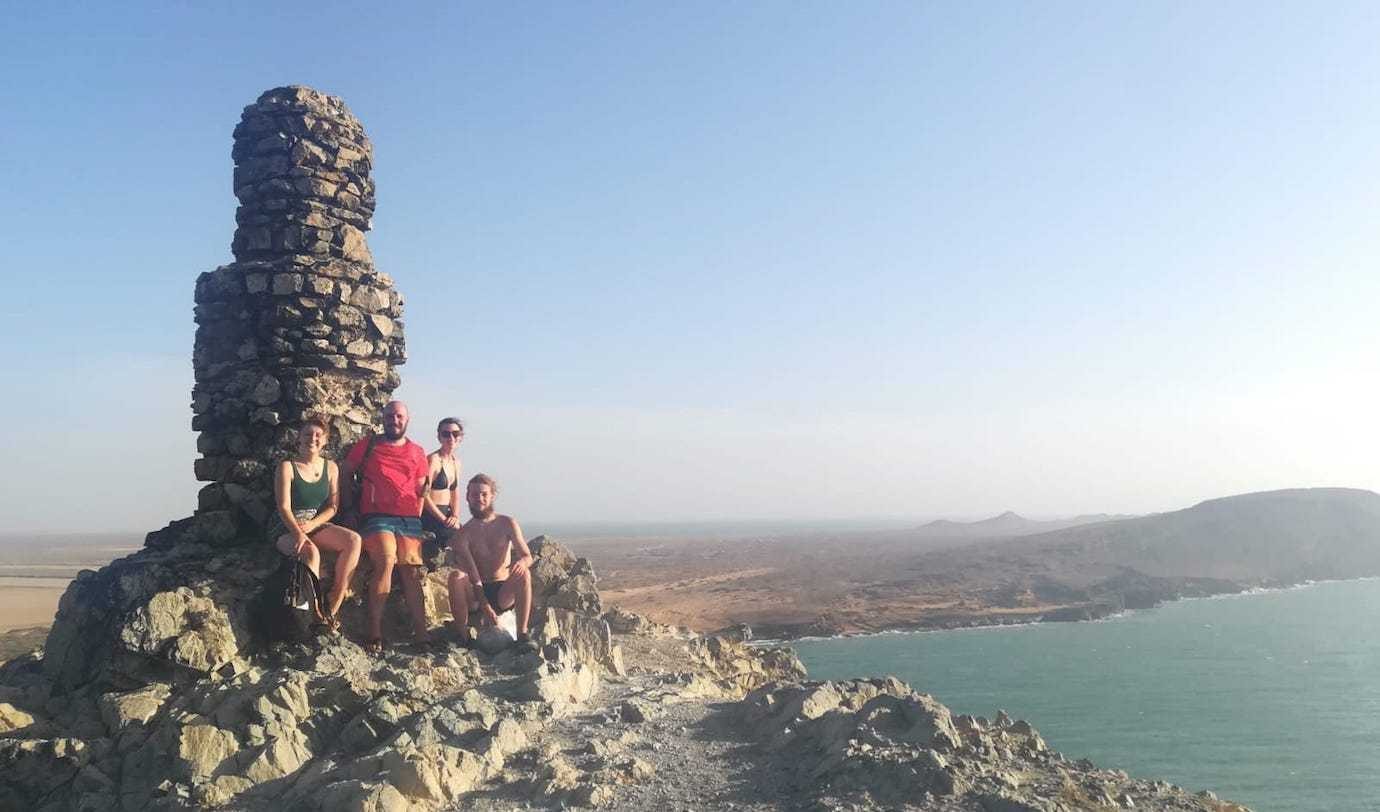
Final thoughts
Although its popularity is growing, Cabo de la Vela is still off the beaten track and continues to be a destination less travelled.
I really enjoyed our time there (aside from being ill!!) and would really recommend for anyone interested in seeing a different side to Colombia – landscape and culture. It was eye opening to see how people live in such remote and harsh environments.
Some people might say you only need a night in Cabo de Vela. Because I was sick, we stayed three nights, but I’d say two nights is a good number.
You can go to El Faro/Ojos del Agua and Pilón del Azucar in the late afternoon and for sunset on your two evenings – I really recommend! I loved Pilón del Azucar – beautiful sunset and could sit in the sun in the late afternoon and not overheat!
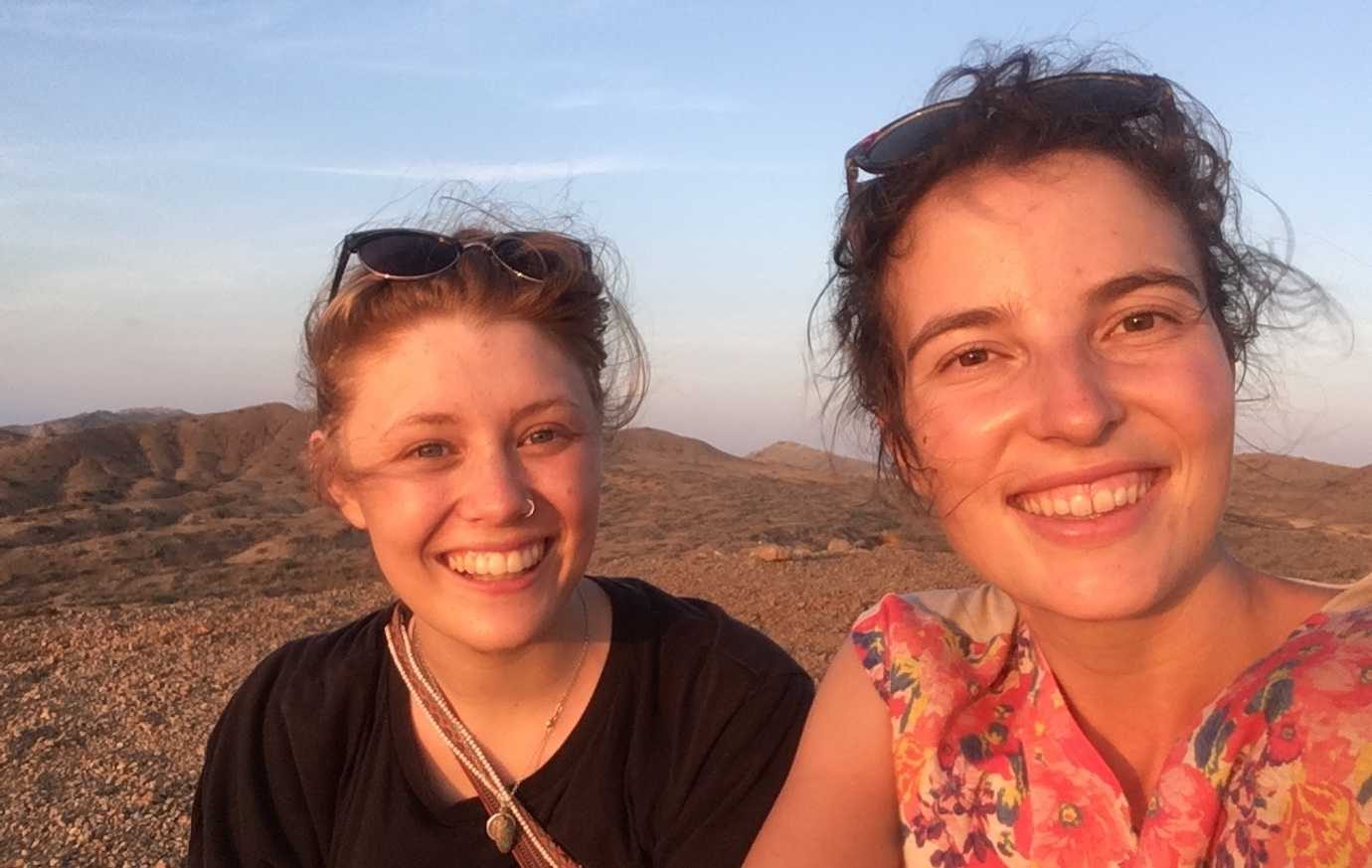
While it does take some effort to get to, I’d say Cabo de la Vela was definitely worth it!

From Cabo de la Vela, we continued north to Punta Gallinas, the tip of South America…stay tuned!